There has been a separate genre for horror movies ever since filmmakers across the world began making movies on occult subjects, which did not conform to the standards of regular films. And then on, the genre has only been explored and exploited in as many as infinite ways possible, featuring different kinds of intimidating sorcerers, scary monsters and spooky creatures in stories that have scared the daylights out of us.
But in 2015, a very unusual horror movie called ‘The Witch’ or ‘The VVitch’ (with double Vs) graced the silver screen, which left many viewers drowned in a single emotion – awe! This Robert Eggers movie did not delve into anything supernatural that was out of the ordinary, but featured a witch, which we have seen umpteen times in films, cartoons and art. The movie neither had the conventional witch donning black robes complete with a hat that rode a broom, nor did it feature the ugly sorceress constantly stirring the gooey contents in her cauldron. This film was way too different! What stood apart in this movie were its compelling narrative and screenplay, its taut script, its strong performances and its perplexing climax that left us literally screaming for more.
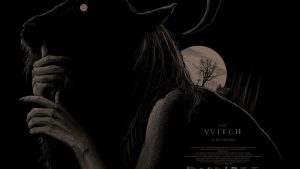
Starring the comparatively newer actress Anna Taylor-Joy and actor Harvey Scrimshaw, along with Kate Dickie and Ralph Ineson in the leads, the film is set in New England of the mid seventeenth century, when folklores of witches and wizards were very popular. People firmly believed in the stories of ugly, old crones, who feasted on human blood to maintain their youths and this is exactly what the director tried to tap on in his film. ‘The Witch’, which was initially intended directly for home media, released in theatres after an overwhelming response from all corners at the Sundance Film Festival.
In this article, we bring you a break up of the film that is morbid, terrifying, gory yet thrilling and exciting at the same time. So before we get on to explaining the several mysteries in ‘The Witch’, we warn you to go and watch it once, lest you feel we spoiled all the fun for you!
The Characters
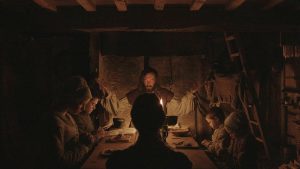
There’s William, his wife Katherine, eldest daughter Thomasin, son Caleb, a set of twins Mercy and Jonas and an infant son Samuel. The family is cast out from the Puritan (reformed English people of the yore, who wanted to bring about a change in the Catholic practices by purifying the Church of England) settlement for their differences of opinion and so they start living at the edge of a foreboding forest, just a stone’s throw away from their cottage and farm. There’s also the family’s pet goat they call Black Phillip, whose revelation comes very late in the film.
The Story
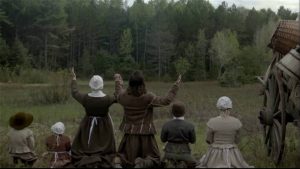
The film is about a family that stays united near a forest until the sudden disappearance of little Sam wreaks havoc in their lives. While Katherine blames Thomasin for it and for certain other events that unfold in the process (also because she is jealous of her virginal daughter), there is actually a sinister force working silently to bump the family members off. Slowly situations start to spiral out of control and each member of the family ends up dying in mysterious ways.
The Sins
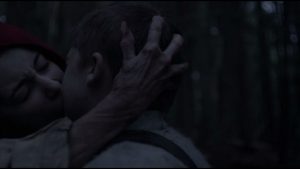
William commits the first sin and that is leaving his Puritan community behind and going his own way with his family. Also, when he steals a silver cup for buying hunting goods, he marks himself for his fate. In one of the scenes, Katherine confesses of her sin to her husband that the youngest son is a result of infidelity and that comes back to haunt her, resulting in her death. Caleb commits a sin when he starts to lust after his own sister, and also gives in to the seductive woman’s advances in the forest, thus ending in his doom. Although Mercy and Jonas haven’t committed any crime per se, but the twins’ continuous nagging and calling their elder sister a witch is what costs them their life. All these are reasons enough for the evil crone to torment the family. Thomasin is depicted as a pious girl, free from all forms of corruption.
The Disappearances And Deaths
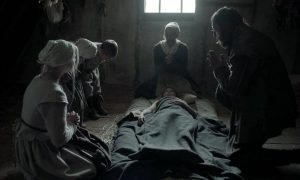
It is clearly revealed some minutes into the film that the witch needed Sam’s blood for preparing her flying potion, which is why she crushes his body to a pulp, thus ticking off one name from the family list. Next, Caleb goes wandering off into the forest on a hunting expedition, only to return home hallucinating (with visions of a seductress in the woods) and then succumbing to a strange ailment later. When William confines the twins Mercy and Jonas, along with Thomasin in the goat shed for their unruly behaviour, the fraternal twins go abruptly missing, hinting it was the witch’s doing again.
While William returns to retrieve his children the next day, two of them are gone and Thomasin has passed out. In retaliation, Black Philip impales him with its horns and William submits to his crimes, later getting crushed under a pile of logs, which kill him instantly. Katherine, having doubts that her daughter is into witchcraft and that she is responsible for all the deaths in the family, tries to strangle her, but is killed by Thomasin in self-defense. It is thus suggested that the Devil wanted Thomasin all to himself and free from all bindings.
The Witch
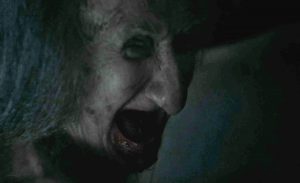
Although the witch is a predominant character, it is surprisingly not the main antagonist of the film. The witch manifests herself in many forms (a goat, a raven, a rabbit and a seductress) during the entire narrative of the movie. First, she is depicted as a haggard, old woman in the woods, who kidnaps Sam and then pounds his body before consuming his remains. She then returns as a sultry, beautiful, young woman, who entices Caleb into a woodside hovel, making him surrender to his own lust. When the camera pans at her wrinkly hands, it is suggested that the woman is actually the crone.
Lastly, it is hinted that the witch, in the form of a ghostly creature, has kidnapped the twins to make her potion (people believed that witches made their levitating concoctions by burning children’s fat), while she presented herself cackling before the three siblings, sucking on a goat’s blood, after disemboweling them. The scenes involving the witch are some of the most gruesome ones, which apart from being queasy, truly send chills down the spine.
Thomasin
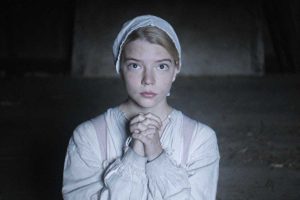
The chaste and uncorrupted teenager is depicted as the submissive and dutiful girl, who loves her parents and siblings alike, until they all start to hold her responsible for the malevolent events that take place in their new home. In the opening scene, when the family is banished by the Puritans, Thomasin turns to take one final look at the community, still longing to be a part of them, thus implying that she would have been safe with them. Also, the girl is untouched by all kinds of corruption and the scene towards the end, where she submits herself to the devil, only implies that she wants liberation from all her ties and that being a part of the coven would only give her the freedom she deserves.
Black Phillip
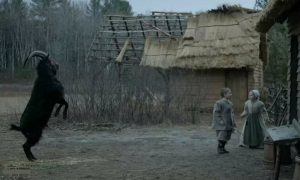
Since the beginning of the film, the twins are shown to be talking to the big, black goat in the shed, which they also confess to. In reality, Black Phillip is actually Satan (in many Christian and Islamic cultures, The Devil is depicted as the one with horns, suborning people’s souls; hence the depiction of a black goat) hiding in plain sight, who had been with the family all along, trying to corrupt Thomasin’s mind so as to make her a member of his witches’ coven, which would have been possible only by eliminating all the other members of the family. The Devil presents himself as a young handsome boy only once when Thomasin demands to see the malicious entity that has claimed the lives of her family members.
The Ending
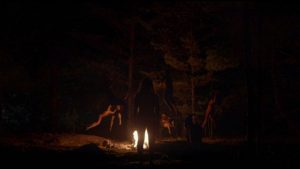
After Black Phillip promises Thomasin of a “delicious” future she had always longed for, she “deals with the Devil” by selling her soul to him, then undresses (this implies that she has submitted to her sexual desires as well) and walks with him (him in the goat form again), deep into the woods, towards an ongoing Witches’ Sabbath. While there is a cauldron continuously stirring the ingredients (remains of Thomasin’s siblings) inside it, all the crones dance around a bonfire and celebrate a new member’s arrival, just before they start to levitate. Thomasin gives in, sheds all her inhibitions and in the last scene, rises above towards her freedom, letting go of all things she once held dear.
As the gravity of the entire film sinks in when viewed as a whole, it truly turns out to be a masterpiece, which slowly and steadily builds up on the horror, which unlike other chillers, is handled quite aesthetically. So, if you still haven’t watched it… go, now!
Read More: Get Out, Explained | The Shining, Explained

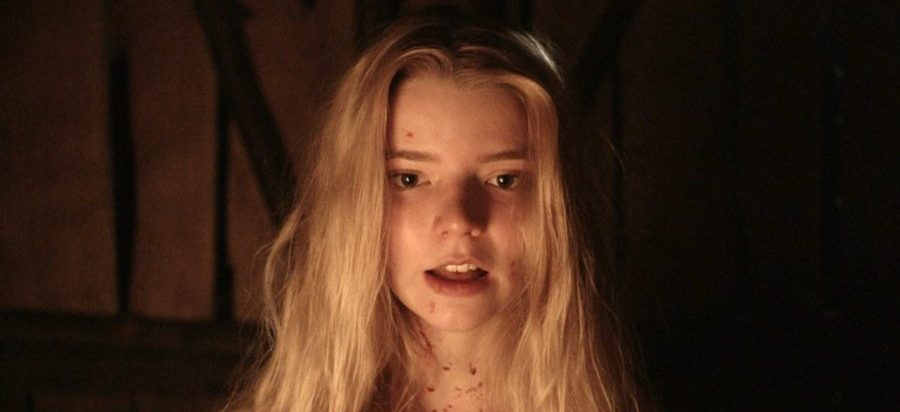
You must be logged in to post a comment.